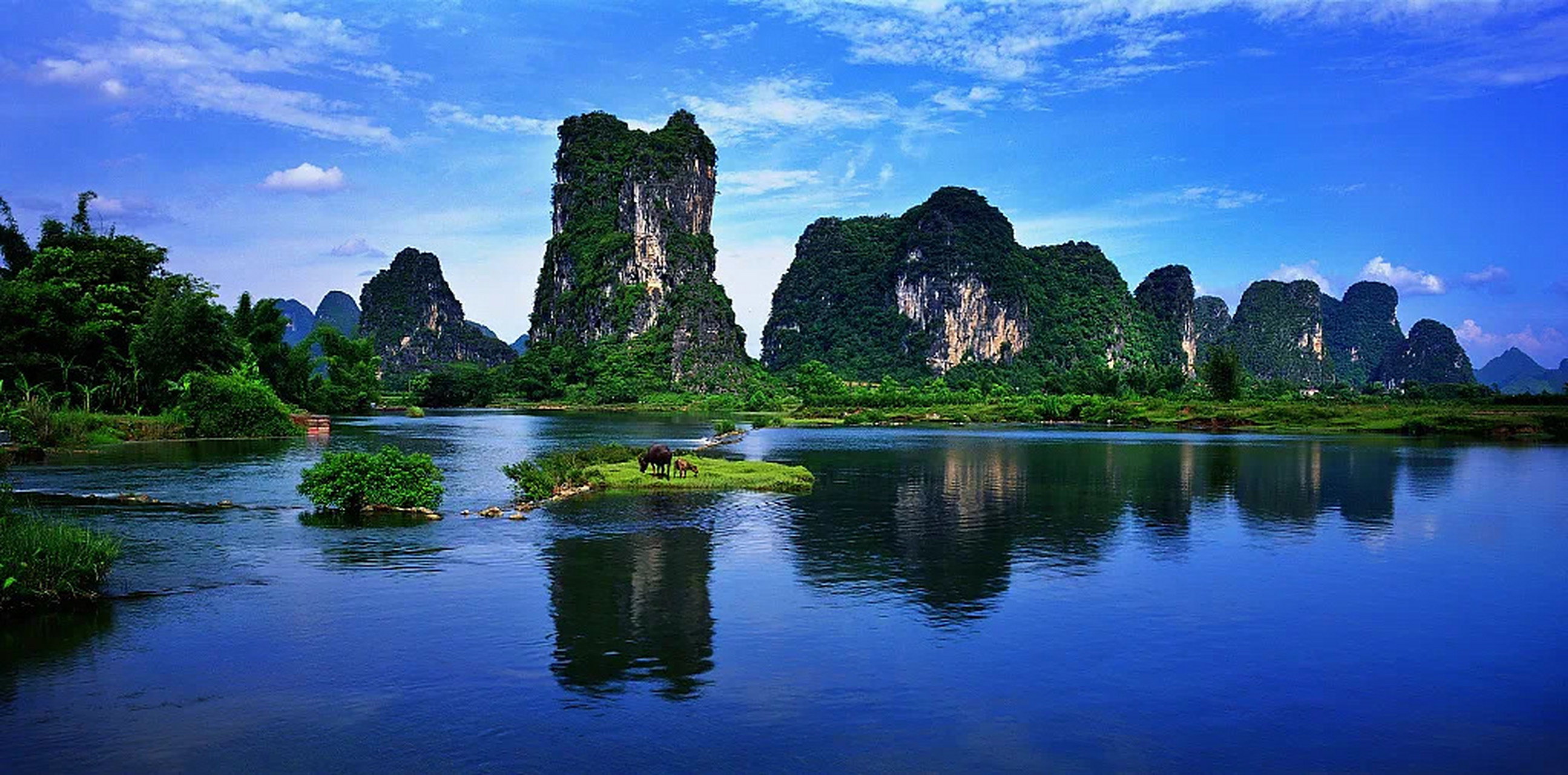
Located in the northeastern part of Guangxi Zhuang Autonomous Region, the Guilin Lijiang Scenic Area is one of the largest and most beautiful karst landscape areas in the world. Originating from Mao'er Mountain in Xing'an County, the Lijiang River flows through Guilin and Yangshuo, stretching approximately 164 kilometers. It is renowned worldwide for its "four wonders": green mountains, clear waters, mysterious caves, and beautiful rocks.
The reputation of "Guilin's landscape is the best under heaven" has been passed down through generations. The mountains along the Lijiang River stand tall and majestic, with various shapes and forms. The stone peaks are often covered with soft bushes and small flowers, looking like garments on beautiful women from a distance. On the riverbanks, the evergreen Fengwei bamboo sways gracefully in the wind, like the skirts of young girls. The most famous attractions include Elephant Trunk Hill, Nine Horse Fresco Hill, and Huangbu Reflection.
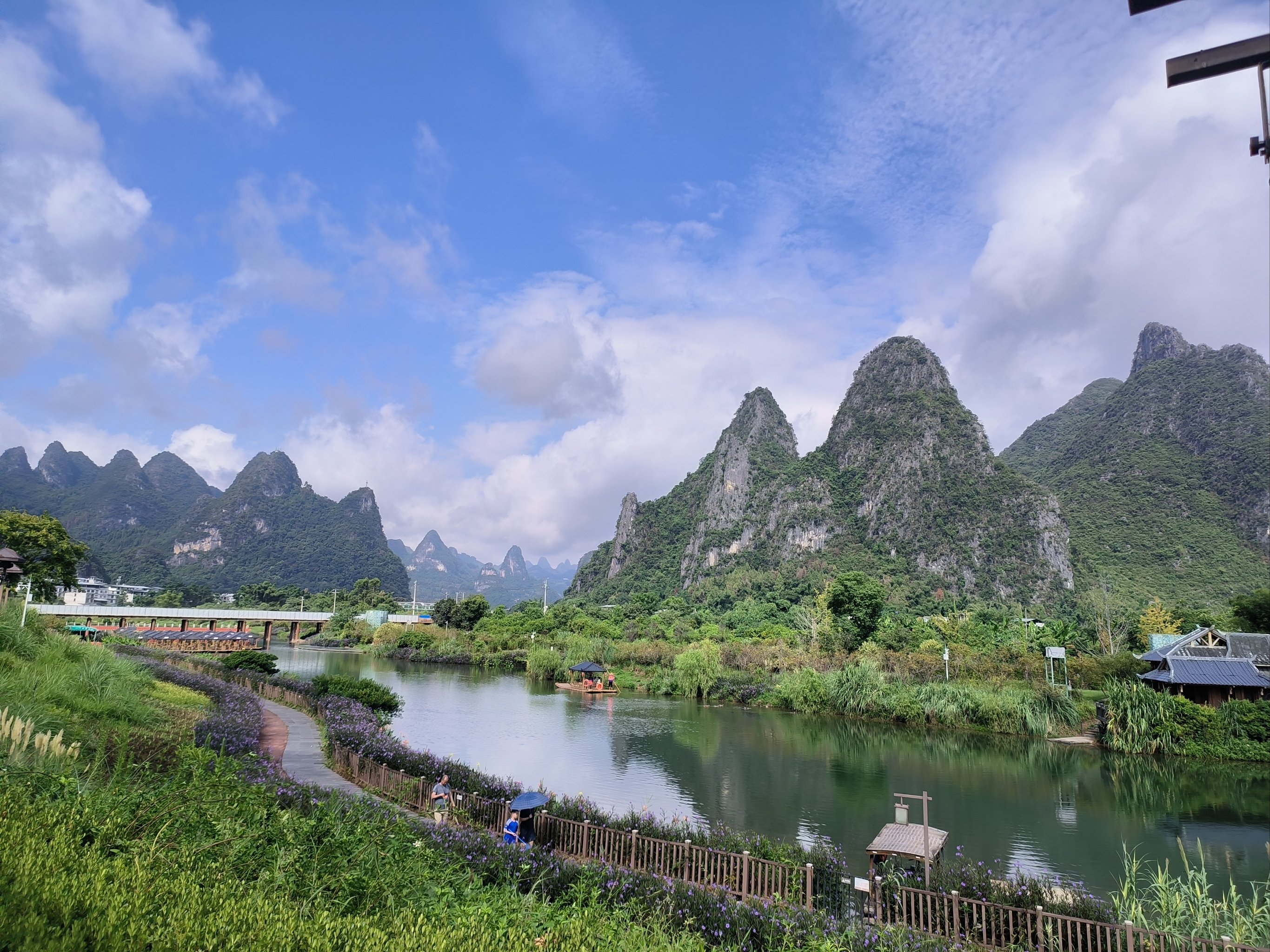
The waters of the Lijiang River are crystal clear, with the peaks reflected perfectly in the water, creating a stunning scene where "the boat travels in the water, and people sit in a painting". The Lijiang River presents different charms in different seasons: in spring, mist shrouds the mountains and rivers, creating a poetic atmosphere; in summer, the riverbanks are lush with greenery, and the river is vibrant; in autumn, the mountains are painted with golden colors, and the reflections are spectacular; in winter, mist缭绕, and the landscape becomes ethereal like a fairyland.
In 1982, the Guilin Lijiang Scenic Area was listed as one of the first National Key Scenic Areas by the State Council; in 2007, it was rated as a National AAAAA Tourist Attraction; on June 23, 2014, at the 38th World Heritage Conference, the second phase of China's Southern Karst project, represented by Guilin, was successfully inscribed on the World Natural Heritage List.
The karst landform in the Guilin Lijiang area is one of the most typical and well-preserved tropical and subtropical karst landscapes in the world. Its formation and evolution process are globally representative, providing a unique model for studying the formation of karst landforms.
The Guilin Lijiang karst landform has extremely high scientific research value and is a natural laboratory for studying the formation and evolution of global karst landforms:
Completely records the evolution process of tropical and subtropical karst landforms, providing standard profiles for global karst research
The special geomorphic environment has fostered rich biodiversity and is a habitat for many rare animals and plants
Unique underground and surface water systems provide typical cases for hydrological research in karst areas
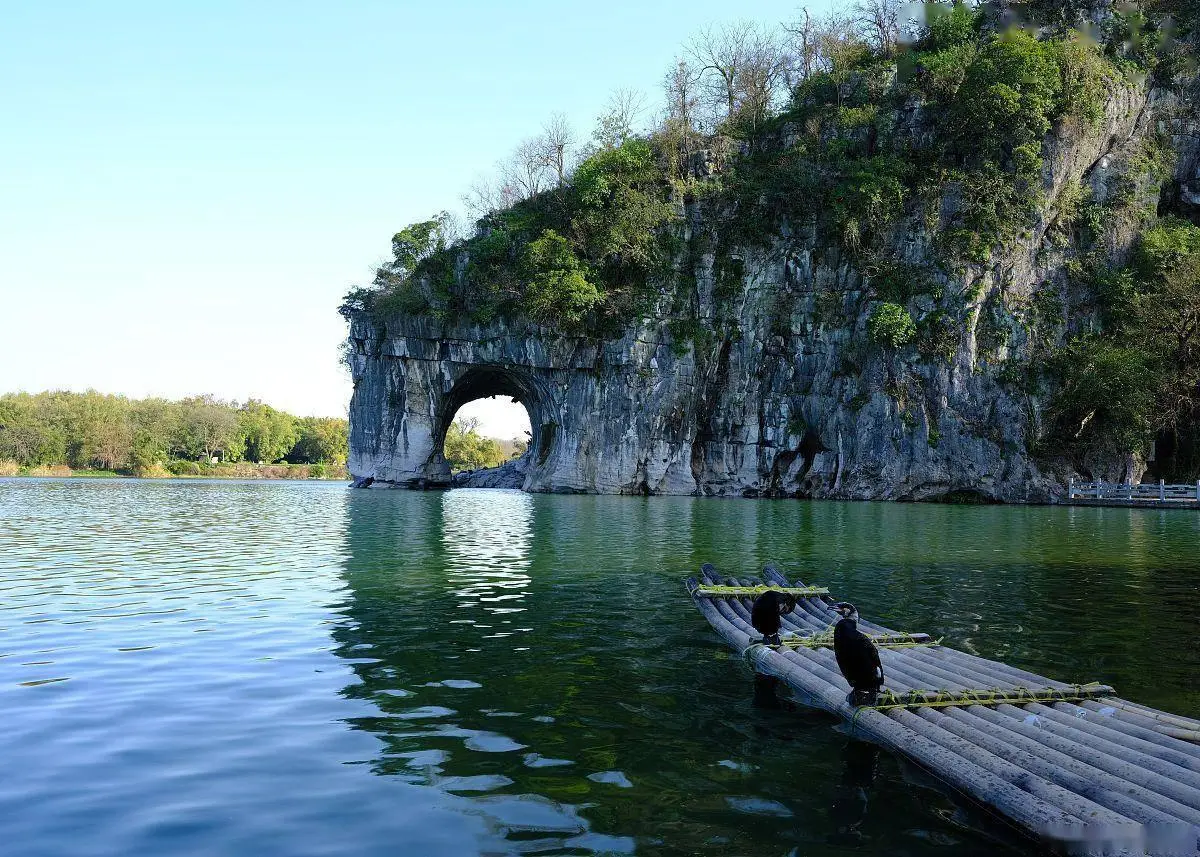
The symbol of Guilin city, named for its resemblance to a giant elephant drinking water with its trunk extended. The Shuiyue Cave in the front of the hill curves like a full moon, forming the wonder of "Elephant Hill and Moon", which is the symbol of Guilin's landscape.
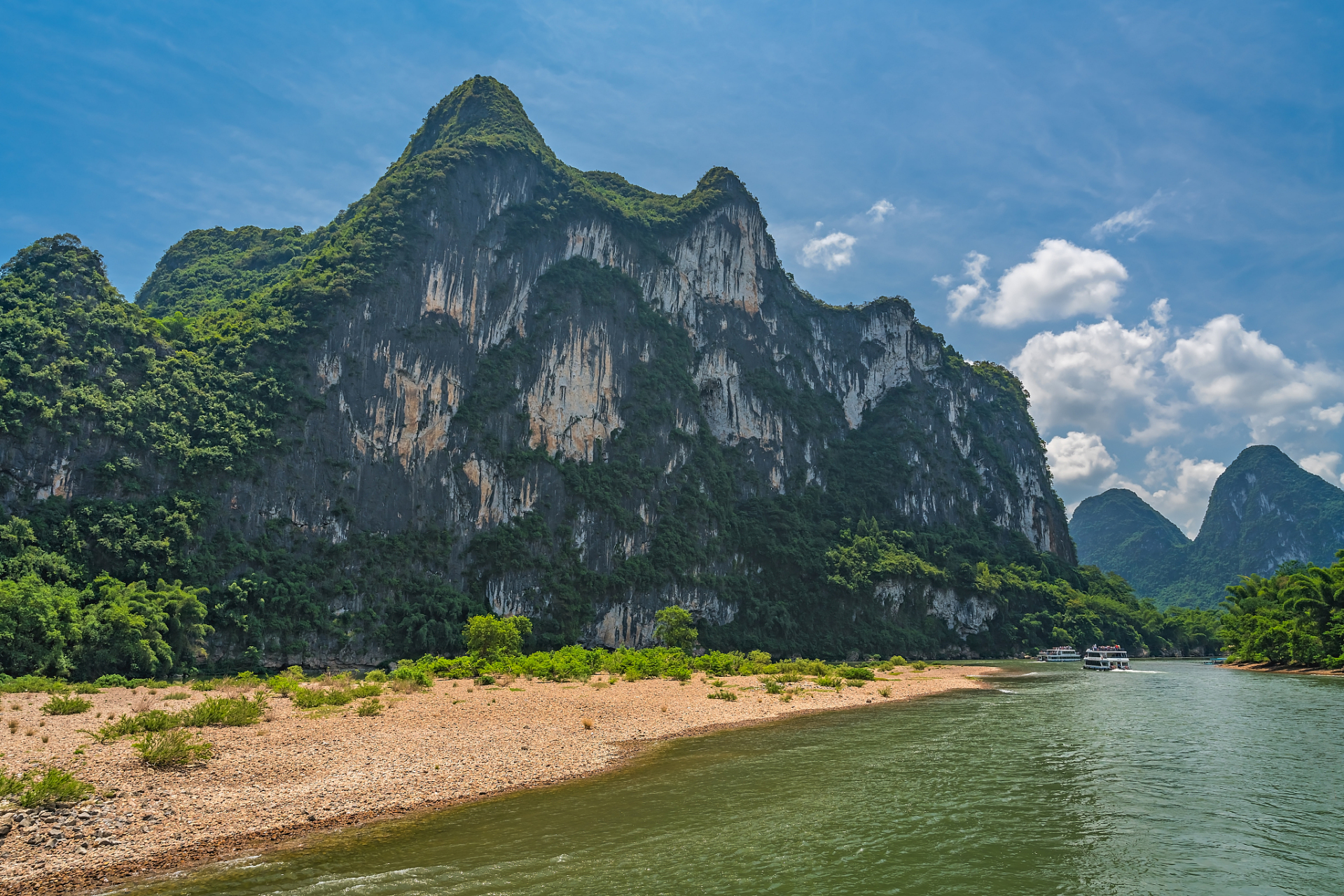
One of the most famous attractions along the Lijiang River, the cliff facing the river looks like a huge ink painting. The natural patterns on the cliff resemble nine galloping horses with different postures, lifelike and amazing.
The essence section of the Lijiang River, with an open and calm river surface. The clear and complete reflections of the peaks on both banks make it a classic scene of Lijiang landscape, which is the pattern on the back of China's 20 yuan banknote.
Located in the center of Yangshuo County, it is an ancient street with a history of over 1,400 years. The street is lined with shops offering local specialties and various handicrafts, creating a unique atmosphere of Chinese and Western cultural integration.
Known as the "State Guest Cave", it is one of the most famous karst caves in Guilin. The stalactites inside are of various shapes and colors, like a crystal palace under the lights. It also preserves murals from the Tang and Song dynasties.
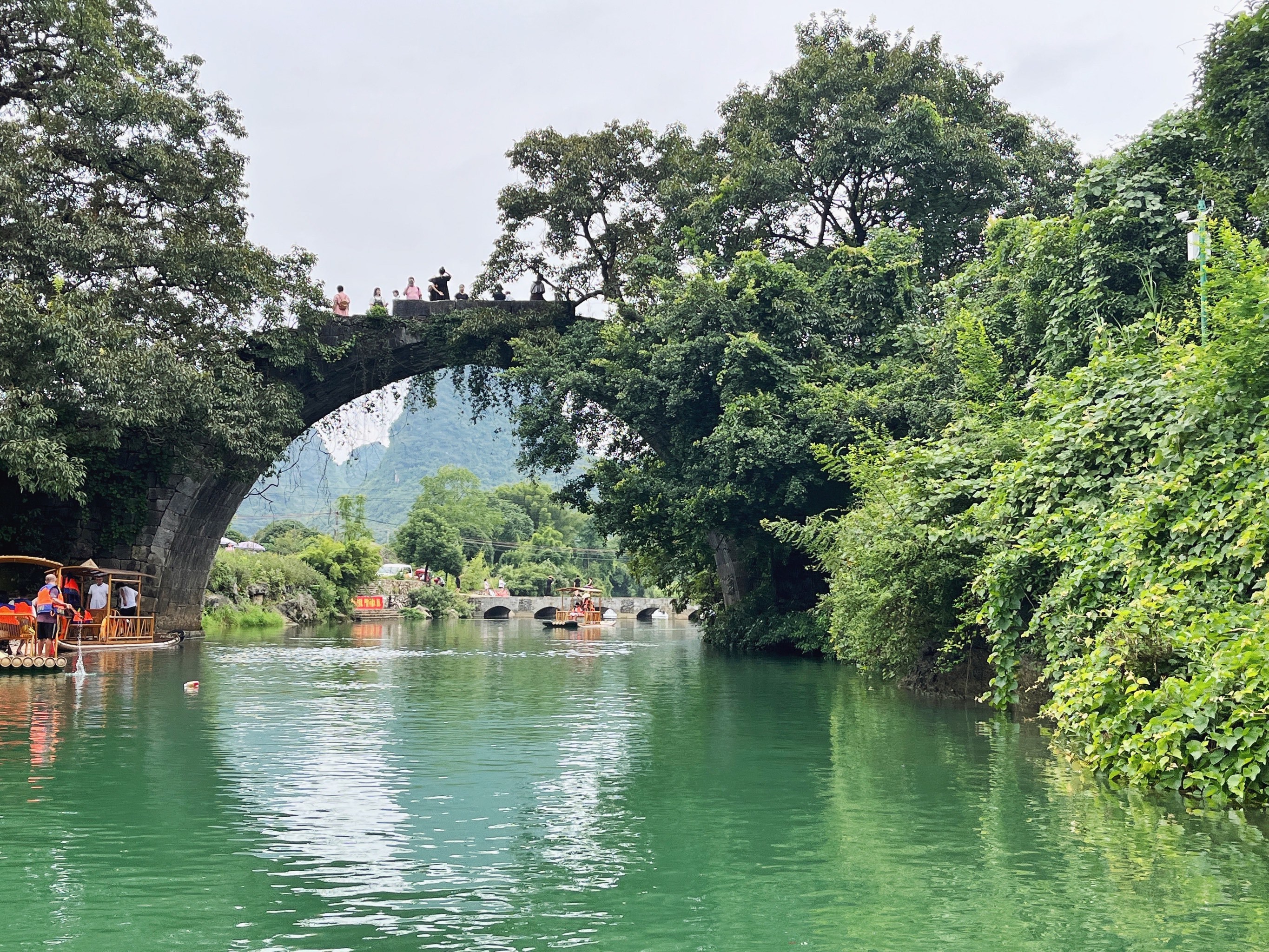
A tributary of the Lijiang River, known as "Little Lijiang". The river water is crystal clear, and the rural scenery on both banks is beautiful. It is the perfect place to experience bamboo rafting, more peaceful and idyllic compared to the Lijiang River.
Guilin is a multi-ethnic area where Han, Zhuang, Yao, Dong and other ethnic groups live harmoniously. The cultures of various ethnic groups blend with each other, forming a unique local culture:
Guilin has rich traditional art forms with strong local characteristics:
The most representative traditional food of Guilin, with fresh soup and smooth noodles
Fresh fish from Lijiang River, braised with beer, tender and delicious
Minced snail meat mixed with pork and stuffed back into the shells, with unique flavor
Lipu taro alternated with pork belly, fragrant but not greasy
| Lijiang River Cruise | 7:30-17:00 (seasonal adjustments) |
| Elephant Trunk Hill Scenic Area | 7:00-18:00 |
| Reed Flute Cave | 8:00-17:30 |
| Yangshuo West Street | Open 24 hours |
| Lijiang River Cruise (Guilin-Yangshuo) | ¥210-360/person (depending on cabin class) |
| Elephant Trunk Hill Scenic Area | ¥60/person |
| Reed Flute Cave | ¥110/person |
| Yulong River Bamboo Rafting | ¥150-250/person (priced by section) |
World Natural Heritage (listed in 2014)
Within Guilin and Yangshuo County, Guangxi, approximately 164 kilometers in length
About 83 kilometers of Lijiang River waters from Guilin to Yangshuo
Karst peak forest landforms, clear river water, rural scenery
National AAAAA Tourist Attraction, National Key Scenic Area
Longji Rice Terraces, Solitary Beauty Peak & Prince City, Xingping Ancient Town, Ziyuan Bajiao Zhai
0773-2825502
Represents a unique landform type and evolution process on Earth, with global significance
The special karst environment has fostered rich biodiversity, including many endemic species
The unique landscape of "the river is like a green silk ribbon, and the mountains are like jade hairpins" has extremely high aesthetic value
The landscape culture has a long history, with rich poems and paintings left by literati and artists of past dynasties
Provides important scientific basis for the study of karst landform formation and evolution